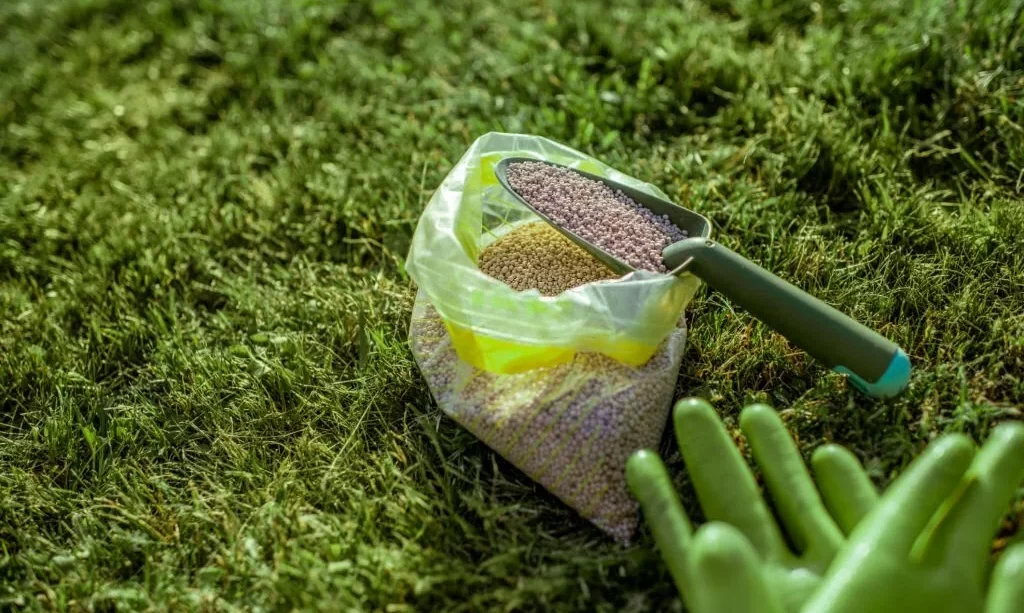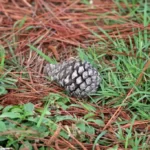A lush, thriving lawn is a source of pride for homeowners and a welcoming sight for all who visit. Yet, the secret to such greenery often lies beneath the surface, in the realm of essential nutrients. While nitrogen and potassium are frequently recognized for their roles in lawn care, phosphorus, the unassuming “P” in the N-P-K ratio, quietly plays a pivotal role in nurturing healthy grass. In this article, we’ll delve into the world of phosphorus and unveil its contributions to the well-being of your grass, helping you understand why this nutrient is a key player in maintaining a vibrant lawn.
- High Phosphorus Fertilizer Content
- Promotes Root Developmen
- Stimulates Flowering and Fruit Production
- Corrects Phosphorus Deficiencies
- Easy Application
The Nutrient Trio: Nitrogen, Phosphorus, and Potassium
In the realm of lawn care, the magic happens when you understand and master the trio of essential nutrients known as N-P-K. These three elements, nitrogen, phosphorus, and potassium, form the foundation for maintaining healthy grass. Each nutrient serves a distinct purpose, with nitrogen promoting leafy growth, potassium enhancing overall resilience, and phosphorus, our focus, contributing to the grass’s underlying vitality. Together, they create the perfect blend to ensure your lawn thrives.
Phosphorus in Grass: The Basics
Phosphorus, often referred to as “P,” is one of the primary macronutrients essential for plant growth. In the context of your grass, it plays a range of critical roles that are often overlooked. At its core, phosphorus is involved in fundamental biological processes within the grass. This nutrient is integral to the transfer of energy within the plant, powering numerous metabolic reactions. It also plays a central role in cell division and the synthesis of DNA, which is crucial for the grass’s growth and development. In other words, phosphorus is the quiet force behind the scenes, ensuring that your lawn remains not only vibrant but also structurally sound and resilient in the face of environmental challenges. As we delve deeper into the specifics, you’ll come to appreciate just how essential this unassuming nutrient is for your grass’s well-being.
Root Development and Strength
Beneath the surface of your lawn, phosphorus works its magic by promoting robust root development. Healthy roots are the foundation of a thriving grass system, and phosphorus ensures that these underground structures grow vigorously. As roots extend and explore the soil, they access vital water and nutrients essential for the grass’s survival. Phosphorus facilitates this process, resulting in an intricate network of roots that anchor the grass securely in the earth. These well-developed roots are better equipped to withstand the stresses of weather, traffic, and pests, making your lawn more resilient and durable.
Flower and Seed Production
Grass isn’t just about the blades you see; it’s also about the reproductive cycles that ensure its continued existence. Phosphorus plays a significant role in this aspect of grass life. It supports the formation of flowers and seeds, vital for the propagation and survival of your lawn. When grass is allowed to complete its natural life cycle, it produces seeds that can germinate and generate new growth. Phosphorus’s involvement in this process ensures that your grass can reproduce and maintain a healthy, self-sustaining population, contributing to the longevity of your lawn.
Resistance to Environmental Stress
Environmental challenges, from drought to extreme temperatures, can take a toll on your lawn. Phosphorus equips your grass with the tools to combat these challenges effectively. It enhances the grass’s ability to withstand stress by promoting biochemical processes that provide energy and resilience. When your lawn faces adversity, the presence of sufficient phosphorus ensures it can cope with such situations more effectively. This resilience is particularly valuable in regions with fluctuating weather conditions, as phosphorus helps your grass adapt and thrive even in less-than-ideal circumstances. The role of phosphorus in fortifying your lawn against environmental stress highlights its significance in maintaining a lush and healthy turf.
The Mycorrhizal Connection
Phosphorus’s journey from the soil to your grass roots involves a fascinating partnership with mycorrhizal fungi. These beneficial fungi establish a symbiotic relationship with grass roots, forming a mycorrhizal network that enhances nutrient uptake, including phosphorus. The mycorrhizal connection is like an underground delivery system, with the fungi acting as couriers, extending the reach of the grass’s roots and making phosphorus more accessible. This remarkable collaboration enhances the grass’s ability to thrive in nutrient-deficient soils, demonstrating the incredible adaptability and resourcefulness of nature.
Signs of Phosphorus Deficiency
Recognizing the importance of phosphorus also means being vigilant about signs of deficiency in your lawn. Phosphorus deficiency can manifest in various ways, including stunted growth, a darker green or purplish hue to the leaves, and reduced flowering or seed production. Additionally, grass experiencing a lack of phosphorus may struggle to recover from stress or damage and may exhibit poor resistance to diseases and pests. Understanding these symptoms is key to addressing potential deficiencies promptly and ensuring your grass remains in the best possible health.
Phosphorus Application in Lawn Care
To harness the benefits of phosphorus for your lawn, it’s important to consider responsible and effective phosphorus application. Whether through carefully chosen fertilizers or organic sources like bone meal, phosphorus supplementation can be a valuable aspect of lawn care. However, responsible use is essential, as excess phosphorus can have environmental implications, particularly in waterways. Proper understanding of when, where, and how to apply phosphorus is crucial in maintaining a balanced and sustainable lawn care routine.
Conclusion
In the intricate dance of nutrients that sustains your lawn, phosphorus takes on a crucial role. From promoting robust root development to aiding in flower and seed production, this unassuming nutrient is the unsung hero of a vibrant and healthy grass system. Its ability to bolster grass resistance to environmental stress and its partnership with mycorrhizal fungi exemplify the depth of its importance. Recognizing the signs of phosphorus deficiency and understanding responsible phosphorus application are key steps in ensuring that your lawn remains a thriving testament to the power of these essential nutrients. By appreciating the role of phosphorus in your grass’s well-being, you can embark on a journey to maintain a lush and resilient lawn that stands the test of time.




